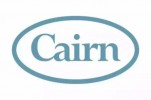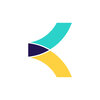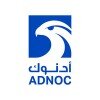Filter interviews by
Tema India Design Engineer Interview Questions and Answers
Tema India Design Engineer Interview Experiences
1 interview found
I applied via Walk-in and was interviewed in Jun 2023. There were 3 interview rounds.

Regarding mechanical basic knowledge ,calculations ,
(2 Questions)
- Q1. What is stess stress tyapes
- Ans.
Stress is a feeling of emotional or physical tension. There are different types of stress, including acute stress, episodic acute stress, and chronic stress.
Stress is a natural response to challenging situations and can be both positive (eustress) and negative (distress).
Acute stress is short-term stress that is often caused by specific events or situations.
Episodic acute stress is when a person experiences frequent ep...
- Q2. What is moment inertia formula
- Ans.
Moment of inertia formula is used to calculate the distribution of mass around an axis.
Moment of inertia formula: I = ∫ r^2 dm
I = moment of inertia
r = distance from the axis of rotation
dm = mass element
Example: For a solid cylinder rotating around its central axis, moment of inertia formula is I = (1/2)mr^2
Interview questions from similar companies

I applied via Naukri.com and was interviewed before Jun 2020. There was 1 interview round.
Interview Questionnaire
28 Questions
- Q1. What is mean by safety
- Ans.
Safety refers to the condition of being protected from harm, danger, or injury.
Safety involves taking measures to prevent accidents and injuries
It includes following rules and regulations to ensure a safe environment
Safety can be achieved through proper training and education
Examples of safety measures include wearing protective gear, using safety equipment, and practicing safe behaviors
Safety is important in all indus...
- Q2. What is LEL
- Ans.
LEL stands for Lower Explosive Limit and is the minimum concentration of a gas or vapor in air that can ignite.
LEL is a safety term used in industries dealing with flammable gases and liquids.
It is expressed as a percentage of the gas or vapor in air.
If the concentration of the gas or vapor is below the LEL, it is too lean to ignite.
If the concentration is above the LEL, it is too rich and can ignite.
For example, the L...
- Q3. What is RA
- Q4. What is JSA/JHA
- Ans.
JSA/JHA stands for Job Safety Analysis/Job Hazard Analysis. It is a process of identifying potential hazards and risks in a job or task.
JSA/JHA is a systematic approach to identify and mitigate potential hazards in a job or task
It involves breaking down a job or task into steps and analyzing each step for potential hazards
The analysis includes identifying the hazards, assessing the risks, and implementing controls to m...
- Q5. Role of HSE
- Ans.
HSE plays a crucial role in ensuring the safety and well-being of employees and the environment.
HSE stands for Health, Safety, and Environment.
It involves identifying and assessing potential hazards and implementing measures to control or eliminate them.
HSE also includes training employees on safety procedures and emergency response plans.
Examples of HSE measures include wearing personal protective equipment, conductin...
- Q6. What is Hchem
- Ans.
Hchem is not a known term or acronym in the engineering field.
Hchem is not a commonly used term in engineering
It is possible that the interviewer misspoke or meant to ask a different question
Without more context, it is difficult to provide a more specific answer
- Q7. What is Hazop
- Ans.
Hazop is a structured and systematic technique used to identify potential hazards and operability problems in industrial processes.
Hazop stands for Hazard and Operability Study
It involves a team of experts analyzing a process to identify potential hazards and operability issues
Hazop is commonly used in the chemical, oil and gas, and pharmaceutical industries
The process involves breaking down the process into smaller pa...
- Q8. What is confined space
- Ans.
Confined space refers to an area that is enclosed and has limited access and ventilation.
Examples include tanks, silos, sewers, and tunnels.
Workers entering confined spaces must follow safety protocols and use specialized equipment.
Hazards in confined spaces include lack of oxygen, toxic gases, and physical obstructions.
Proper training and communication are crucial for working in confined spaces.
- Q9. What is work at height
- Ans.
Work at height refers to any task performed at a height where a person could fall and injure themselves.
Work at height involves working on ladders, scaffolding, roofs, or any other elevated surface
It is important to use appropriate safety equipment such as harnesses, guardrails, and safety nets
Workers should be trained on how to safely work at height and how to properly use safety equipment
Examples of work at height in...
- Q10. Hazard of confined space
- Ans.
Confined spaces pose a significant hazard due to limited entry and exit points, poor ventilation, and potential for hazardous substances.
Limited entry and exit points can make it difficult to escape in case of an emergency
Poor ventilation can lead to a buildup of toxic gases or lack of oxygen
Potential for hazardous substances such as chemicals, fumes, or dust
Examples include tanks, silos, sewers, and tunnels
Proper trai...
- Q11. Precautions of confined space
- Ans.
Precautions to be taken while working in confined spaces
Proper ventilation and air quality testing
Use of personal protective equipment
Proper lighting and communication equipment
Training and certification for workers
Emergency rescue plan in place
- Q12. What is LEL&UEL
- Ans.
LEL&UEL stands for Lower Explosive Limit and Upper Explosive Limit respectively. They are the minimum and maximum concentrations of a flammable gas or vapor in air that can ignite.
LEL is the lowest concentration of a gas or vapor that can ignite
UEL is the highest concentration of a gas or vapor that can ignite
Concentrations between LEL and UEL are considered flammable
LEL and UEL vary depending on the gas or vapor
LEL an...
- Q13. What is competent person
- Q14. What is fire
- Ans.
Fire is a chemical reaction that releases heat, light, and various gases.
Fire is a rapid oxidation process that occurs when fuel (such as wood, paper, or gasoline) combines with oxygen in the presence of heat or a spark.
It releases heat, light, and various gases such as carbon dioxide, water vapor, and nitrogen oxides.
Fire can be beneficial (such as for cooking or heating) or destructive (such as in wildfires or house ...
- Q15. Types of fire
- Ans.
There are four types of fire: Class A, Class B, Class C, and Class D.
Class A fires involve ordinary combustibles such as wood, paper, or cloth.
Class B fires involve flammable liquids or gases such as gasoline, oil, or propane.
Class C fires involve electrical equipment such as appliances, wiring, or circuit breakers.
Class D fires involve combustible metals such as magnesium, titanium, or sodium.
- Q16. Type of extinguisher
- Ans.
There are different types of fire extinguishers for different types of fires.
Water extinguishers for Class A fires (wood, paper, cloth, etc.)
CO2 extinguishers for Class B and C fires (flammable liquids and electrical fires)
Dry chemical extinguishers for Class A, B, and C fires
Foam extinguishers for Class A and B fires
Wet chemical extinguishers for Class K fires (cooking oils and fats)
- Q17. Modes of heat transfer
- Ans.
Modes of heat transfer include conduction, convection, and radiation.
Conduction is the transfer of heat through a material without any movement of the material itself.
Convection is the transfer of heat through the movement of fluids, such as air or water.
Radiation is the transfer of heat through electromagnetic waves, such as from the sun or a fire.
- Q18. How to prevent fire
- Ans.
Preventing fire requires proper handling of flammable materials and regular maintenance of electrical equipment.
Store flammable materials in designated areas away from heat sources
Regularly inspect and maintain electrical equipment
Install smoke detectors and fire extinguishers in appropriate locations
Train employees on fire safety procedures and evacuation plans
- Q19. What is msds
- Ans.
MSDS stands for Material Safety Data Sheet.
MSDS provides information about hazardous chemicals and substances.
It includes information about the physical and chemical properties of the substance, health hazards, precautions for safe handling and use, and emergency procedures.
MSDS is required by law for all hazardous chemicals and substances used in the workplace.
It is important to read and understand the MSDS before usi...
- Q20. How to do firefighting
- Ans.
Firefighting involves identifying and extinguishing fires to prevent damage and loss of life.
Assess the situation and determine the type and size of fire
Use appropriate firefighting equipment such as fire extinguishers, hoses, and pumps
Follow safety protocols and wear protective gear
Coordinate with other firefighters and emergency responders
Evacuate people from the affected area
Monitor the situation and ensure the fire
- Q21. How to prevent the accident
- Ans.
Prevent accidents by identifying potential hazards and implementing safety measures.
Conduct regular safety audits and risk assessments
Provide proper training and education to employees
Implement safety protocols and procedures
Use appropriate safety equipment and gear
Encourage a culture of safety and accountability
Regularly review and update safety policies and procedures
- Q22. How to investigate the accident
- Ans.
To investigate an accident, follow a systematic approach involving data collection, analysis, and identification of root causes.
Gather all available information about the accident, including eyewitness accounts, photographs, and any relevant documents or records.
Conduct interviews with individuals involved in the accident to gather their perspectives and insights.
Examine the accident scene for physical evidence, such a...
- Q23. Emergency procedure
- Q24. What is H2s
- Ans.
H2S is a colorless, flammable, and toxic gas with a strong odor of rotten eggs.
H2S is commonly known as hydrogen sulfide.
It is produced naturally by the breakdown of organic matter and is found in natural gas, crude oil, and volcanic gases.
It is highly toxic and can cause respiratory failure, loss of consciousness, and even death.
H2S is used in various industries such as oil and gas, mining, and pulp and paper.
It is al...
- Q25. Properties of H2s
- Ans.
H2S is a colorless, flammable, and toxic gas with a strong odor of rotten eggs.
H2S is highly flammable and can ignite easily
It is toxic and can cause respiratory failure
It has a distinctive odor of rotten eggs
H2S is used in the production of sulfuric acid and in the petroleum industry
- Q26. Hirerchy procedure
- Q27. Permissible exposure limit of H2s,co,co2,methane
- Ans.
Permissible exposure limits (PEL) are the maximum allowable concentrations of hazardous substances in the workplace.
H2S: PEL is 10 ppm (parts per million) over an 8-hour workday
CO: PEL is 50 ppm over an 8-hour workday
CO2: No specific PEL, but recommended exposure limit is 5,000 ppm over an 8-hour workday
Methane: No specific PEL, but recommended exposure limit is 1,000 ppm over an 8-hour workday
- Q28. Short term exposure limit of H2s
- Ans.
Short term exposure limit (STEL) of H2S is 10 ppm.
STEL is the maximum concentration of a substance that a worker can be exposed to for a short period of time without suffering from immediate or long-term health effects.
The STEL for H2S is set at 10 ppm (parts per million) by OSHA (Occupational Safety and Health Administration).
Exposure to H2S at levels above the STEL can cause symptoms such as eye irritation, headache,...
Interview Preparation Tips

I applied via Naukri.com and was interviewed in Oct 2020. There were 3 interview rounds.
Interview Questionnaire
1 Question
- Q1. The HR round was very pathetic. Sreethala took my HR round.
Interview Preparation Tips
Mumbai location. They will take all the interview rounds. The HR will ask you to submit all documents and last moment they will cancel your candidature without giving you any specific reason.

I applied via Recruitment Consultant and was interviewed in Dec 2020. There were 6 interview rounds.
Interview Questionnaire
2 Questions
- Q1. 1st round is technical , 2nd is values & behaviors , 3rd is assessment road
- Q2. Be clear on values & behaviours , practice assement round offline before attempting
Interview Preparation Tips

I applied via Company Website and was interviewed in May 2024. There were 2 interview rounds.
Behavioral questions and resume delve
Pmi - product management information
Interview Preparation Tips

(1 Question)
- Q1. Behavioral and management related

I applied via LinkedIn and was interviewed before Oct 2021. There were 2 interview rounds.

(4 Questions)
- Q1. Previous work experience in structural design,
- Q2. Manual calculation of structural members
- Ans.
Manual calculation of structural members involves using mathematical equations to determine the strength and stability of a structure.
Manual calculations require a thorough understanding of structural mechanics and material properties
Calculations may involve determining loads, stresses, and deflections
Examples of manual calculations include determining the size of beams and columns, and designing connections between st
- Q3. Wind load calculation formula as per Indian Standard
- Ans.
The wind load calculation formula as per Indian Standard is given in IS 875 Part 3.
The formula takes into account the wind speed, building height, terrain category, and importance factor.
The basic wind speed is determined based on the location of the building.
The terrain category is classified as either I, II, III, or IV depending on the roughness of the surrounding area.
The importance factor is based on the function o...
- Q4. Is seismic load calculated in vertical direction
- Ans.
No, seismic load is not only calculated in vertical direction.
Seismic load is calculated in all three directions - vertical, horizontal and torsional.
The seismic load in the vertical direction is usually smaller than the horizontal direction.
The seismic load is calculated based on the seismic zone, soil type, building height, and other factors.
The seismic load is important to consider in the design of structures to ens
Interview Preparation Tips
Manual calculation of structural members beams, columns, slabs, footing.
Don't just learn software's learn basics.

I applied via Walk-in and was interviewed in Apr 2024. There were 2 interview rounds.
(2 Questions)
- Q1. What is Piping procedure
- Ans.
Piping procedure is a set of guidelines and steps followed in the design, fabrication, installation, and testing of piping systems.
Piping procedure includes determining the layout and routing of pipes based on the project requirements.
It involves selecting the appropriate materials for the pipes and fittings to ensure compatibility and durability.
Welding, bending, and joining techniques are specified in the piping proc...
- Q2. What is Isolation
- Ans.
Isolation in piping engineering refers to the process of separating a section of piping system from the rest for maintenance or safety purposes.
Isolation involves closing off valves to prevent flow of fluids in a specific section of piping.
Isolation may be necessary for maintenance, repair, or safety reasons.
Examples of isolation methods include using spectacle blinds, line blinds, or double block and bleed valves.
Isol...
(2 Questions)
- Q1. What is your last company
- Ans.
My last company was a multinational engineering firm specializing in oil and gas projects.
Worked on designing piping systems for oil and gas refineries
Collaborated with other engineers to ensure project deadlines were met
Participated in site visits to oversee installation of piping systems
- Q2. What is your expectations
- Ans.
I expect a challenging role where I can utilize my skills and knowledge to contribute to the success of the projects.
Expectation of working on diverse projects to enhance skills
Opportunity to collaborate with a team of experienced professionals
Desire for continuous learning and growth in the field
Expectation of a supportive work environment to thrive in

I appeared for an interview before Feb 2024.
(2 Questions)
- Q1. Replacement question every time
- Q2. Every year interview but only showing
Interview Preparation Tips

I appeared for an interview before Mar 2024, where I was asked the following questions.
- Q1. General overall previous experience.
- Q2. What is expected in the current rolt
Interview Preparation Tips
Tema India Interview FAQs
Tell us how to improve this page.
Interview Questions for Popular Designations
- Mechanical Engg. Design Interview Questions
- Senior Design Engineer Interview Questions
- Electrical Design Engineer Interview Questions
- Structural Design Engineer Interview Questions
- Piping Designer Interview Questions
- Auto CAD Designer Interview Questions
- Junior Design Engineer Interview Questions
- Hardware Design Engineer Interview Questions
- Show more
Tema India Design Engineer Interview Process
based on 1 interview
Interview experience
Interview Questions from Similar Companies
Tema India Design Engineer Reviews and Ratings
based on 3 reviews
Rating in categories
|
Production Engineer
32
salaries
| ₹2.2 L/yr - ₹4.6 L/yr |
|
QA QC Engineer
18
salaries
| ₹1.9 L/yr - ₹6.5 L/yr |
|
Senior Production Engineer
13
salaries
| ₹3.6 L/yr - ₹6 L/yr |
|
Design Engineer
11
salaries
| ₹2.8 L/yr - ₹6.5 L/yr |
|
Assistant Manager
9
salaries
| ₹7.5 L/yr - ₹9.7 L/yr |

Petrofac

Baker Hughes

Cairn Energy

NBTC GROUP
- Home >
- Interviews >
- Tema India Interview Questions >
- Tema India Design Engineer Interview Questions















